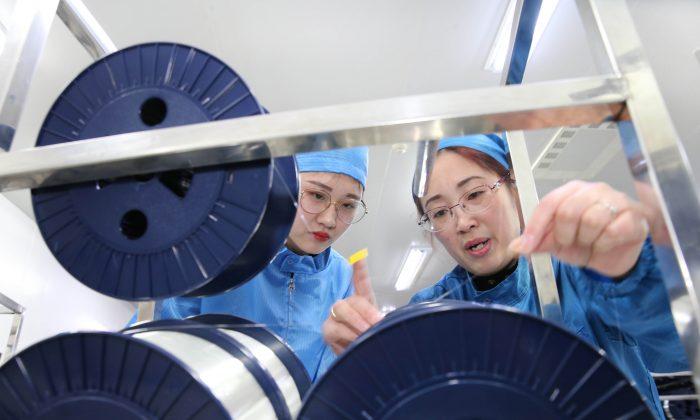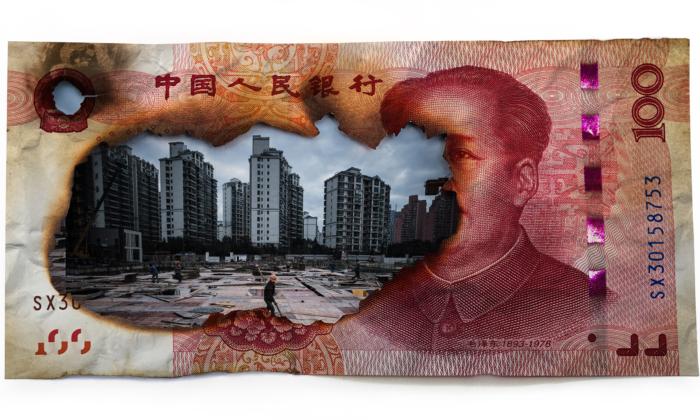A weakening manufacturing sector will likely push Beijing authorities to issue fresh rounds of stimulus measures going forward.
China’s official Manufacturing Purchasing Managers’ Index (PMI) fell to a reading of 50, which is the dividing line between expansion and contraction. November marked the first month that the reading didn’t increase month-over-month in more than two years.
Manufacturing weakness and a slowing real estate construction sector also are reflected in the commodities market. Both iron ore futures and steel rebar futures are trading at multi-week lows, according to data from the Financial Times.
“In the face of continued trade tensions, manufacturers are turning more cautious, evident from weaker business expectations and slower purchases of inputs,” Morgan Stanley analyst Robin Xing wrote in a note to clients Nov. 30. Analysts project the index to dip below 50, signaling a contraction, in the coming months.
When the reading dips below 50, policymakers typically enact stimulus measures.
“We believe easing this time could focus more on the private sector and fiscal policy,” Morgan Stanley wrote. It expects Beijing to cut VAT by 2 to 3 percentage points at the 16 percent bracket, increase local government bond issuances and lower required reserve ratios at banks.
ING is more sanguine on PMI going forward, believing it should remain steady as government stimulus kicks in, despite the specter of a worsening trade war.
“Though some fiscal money will be used for debt repayment and loan rollovers, the rest will go into infrastructure projects, which will support manufacturing activities, even if the trade war continues to escalate,” ING analysts wrote Nov. 30.
A shrinking manufacturing sector should come as no surprise as U.S. President Donald Trump’s ongoing trade war takes its toll on China’s large export sector. A slowdown in non-manufacturing activities is far more disappointing.
The National Bureau of Statistics reported catering and real estate services entered contraction territory last month, which was most concerning to ING analyst Iris Pang, as it “reflects that consumption is falling.”
Consumer spending has become an increasingly large part of China’s domestic economy in recent years. But consumers have recently been hamstrung by lackluster employment, a slowing real estate market, a falling stock market, and weak currency purchasing power.
China Looks Domestically
Outside of government intervention, a key avenue to offset manufacturing weakness is the continued development of the private sector, especially in technology.Pushed by the ongoing trade war and recent decisions by both the United States and the European Union to restrict exports of emerging technologies, China is increasing the investment, development, and production of new technologies within its borders.
“Events like the banning of selling components to ZTE and some of the discussions around displacing a lot of higher-end manufacturing supply chain out of China will certainly cause us to continue to work to develop native industries,” Ben Harburg, managing partner of MSA Capital, a Beijing-based venture capital firm, told CNBC on Nov. 29 at CNBC’s East Tech West Conference in Guangzhou.
The venture capital firm is investing in “things that would be developed organically, domestically and will have a lot less dependence on U.S. inputs.”
Chinese technology giants, such as Alibaba and Huawei, are investing large sums into manufacturing computer chips, another focal point of industrial policy.
The global chip industry has been for decades following Moore’s Law, where the capacity of the same-sized chip doubles every two years. But Moore’s Law may be reaching its physical limit and chips are becoming commoditized and less expensive.
That’s where Chinese manufacturers can take over. If Chinese firms can efficiently commoditize microchips and make them cheaper and better, they rightfully will gain global market share.
The United States needs to continue pushing the innovation envelope domestically and shift into more niche industries such as nano-chips and quantum computing. High-tech companies can use commoditized Chinese components, but America must work with its allies in Europe and Japan to develop testing procedures to make sure the China-sourced components and chips meet quality, security, and data handling standards.
But can China weather short-term challenges to allow its vast manufacturing sector to transition? It’s increasingly evident that tinkering at the margins may not be enough, yet cutting loose would further hurt investor and consumer confidence.






Friends Read Free